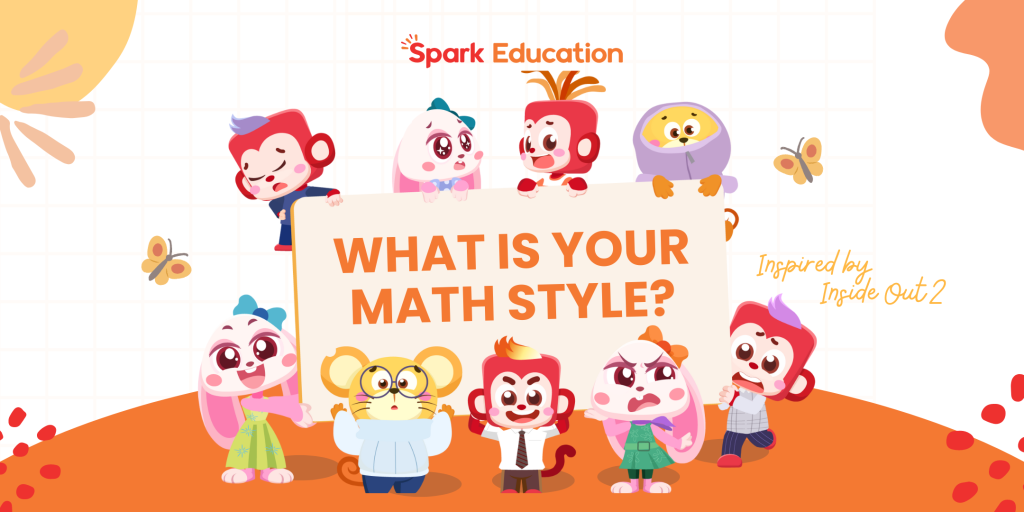
Does your child jump right in math problems, fret about mistakes, or get frustrated easily? Just like the characters in Inside Out 2, every child has a unique set of emotions and approaches to learning math. Learn to identify their math learning styles and support their success.
Understanding your child’s math personality is key to helping them overcome math challenges and create a positive learning environment. At Spark Education, we believe that every child can succeed in math. Our Spark Math programs, designed with input from child psychologists, cater to kids of different math learning styles, turning math anxiety into excitement.
Understand Your Child’s ‘Inside Out’ Math Learning Styles
Every child has a unique approach to math, driven by their emotions and math learning styles. Drawing inspiration from the characters of Inside Out 2, this fun quiz helps you identify your child’s dominant math personality based on their behavior and attitudes towards math learning.
Inside Out 2 Math Personality Fun Quiz
Choose the answer that best describes your child’s math learning experience.
Question 1: How does your child feel about math class?
| A. Enjoys math class and finds it exciting. B. Likes math but needs extra time to process information. C. Gets frustrated easily during math lessons. D. Worries about being ask questions during math time. E. Shows disinterest in abstract or theoretical math topics. F. Worries about giving incorrect answers in math class. G. Prefers math activities when they can work with classmates. H. Might feel self-conscious about participating in class. I. Lacks interests or engagement in math class. |
Question 2: How does your child handle math homework?
| A. Tackles homework with energy and looks for creative solutions. B. Takes homework seriously but may need reminders to stay focused. C. Shows impatience when encountering complex math problems. D. Feels overwhelmed by the workload and may procrastinates. E. Questions the practicality and purpose of the homework. F. Worries about completing homework on time. G. Prefers to do math homework with a friend. H. Avoids seeking help or admitting difficulties. I. Puts minimal effort into completing homework. |
Question 3: How does your child respond to math mistakes?
| A. Views mistakes as opportunities to learn. B. Takes mistakes to heart but keeps trying. C. Reacts defensively and may blame others for their mistakes. D. Gives up easily or avoids similar challenges. E. Questions the value of the problem when they made a mistake. F. Worries about repeating the same mistakes. G. Seeks help from others to correct mistakes. H. Feels ashamed and tries to cover up mistakes. I. Takes mistakes in stride and remains unaffected. |
Question 4: How does your child prefer to learn math?
| A. Prefers interactive games, puzzles, and hands-on activities. B. By listening to explanations and following examples. C. With clear instructions and step-by-step guidance. D. By avoiding math-related activities altogether if possible. E. Prefers real-world applications and practical problems. F. With constant reassurance and positive feedback. G. By working collaboratively with peers. H. Prefers 1-on-1 or small-group learning settings. I. Prefers minimal effort in learning activities. |
Question 5: How does your child feel about math tests?
| A. Prepare for math tests with confidence. B. Prepares thoroughly for tests but may worry about making mistakes. C. Feels intense frustration which may affect performance. D. Avoids math tests whenever possible. E. Challenges the necessity of math tests. F. Hits the book hard for last-minute revision before tests. G. Prefers group tests to individual ones. H. Feels embarrassed if they perform poorly. I. May perform adequately but without excitement. |
Question 6: How does your child respond to praise for math accomplishments?
| A. Feels proud and motivated to do more. B. Is happy but modest about their achievements. C. May become arrogant and competitive. D. Disregards praise and focuses on mistakes. E. Values praise and rewards that give practical benefits. F. Feels relieved but still worries about future performance. G. Downplays their own effort but highlight other’s contributions. H. Feels awkward by attention or recognition. I. Acknowledge the praise casually or unmoved. |
Scoring and Results
Each answer option above is corresponding an Inside Out 2 character. Add up the points for each character to find the highest score. The character with the highest score shows your child’s main math personality.
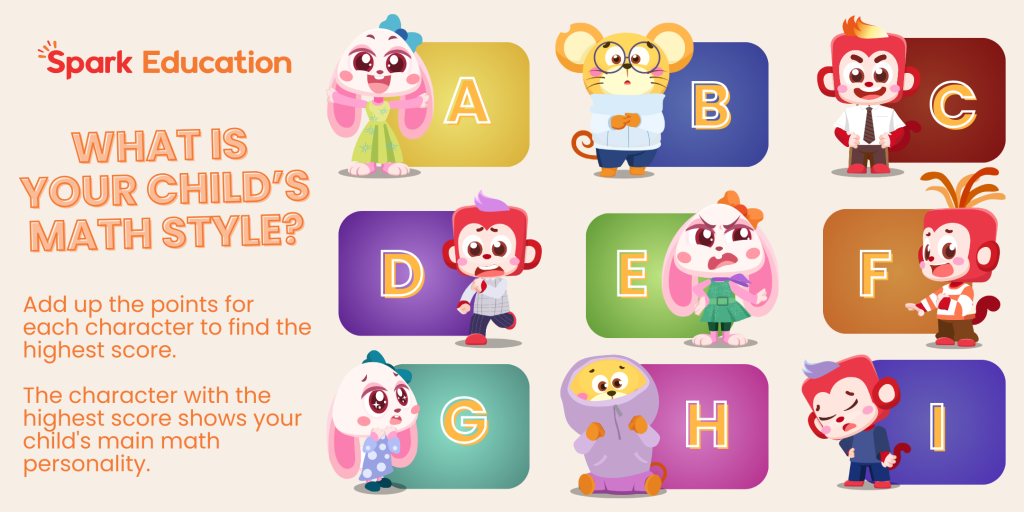
| A: Joy | B: Sadness | C: Anger | D: Fear | E: Disgust |
| F: Anxiety | G: Envy | H: Embarrassment | I: Ennui |
Important note: This fun quiz is designed to provide general insights into your child’s math learning styles. However, children exhibit a wide range of behaviors and emotions, and this quiz is not a definitive assessment. The results should be considered as a starting point for understanding your child’s unique math learning styles.
‘Inside Out’ Math Learning Styles Explained
Joy: The Mathemagician
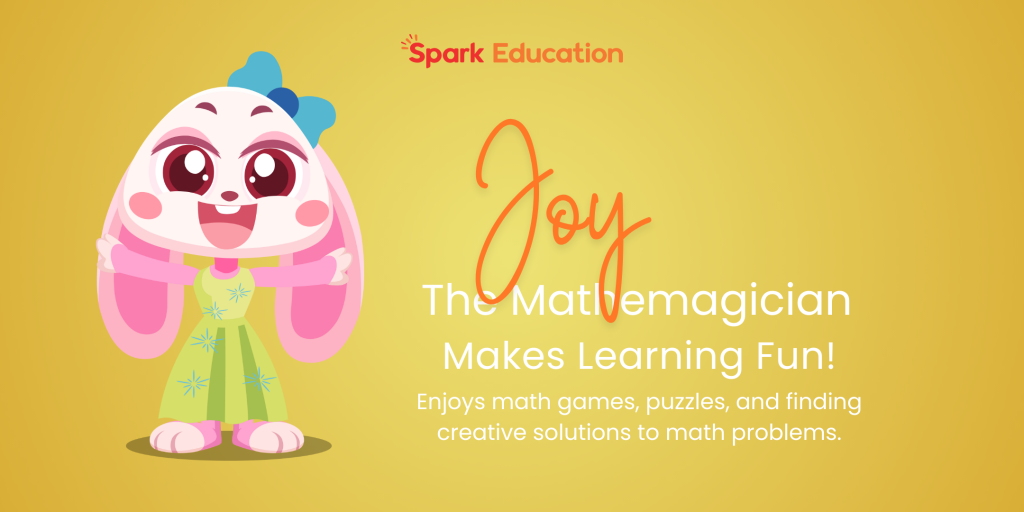
Does your child love puzzles, games, and creative problem-solving? They might be a Joy! Kids with such a math personality thrive on challenges and see math as a fun adventure.
Our Spark Math programs ignite students’ curiosity with interactive games, animated stories, and open-ended problems. Imagine your child exploring math through hands-on activities, collaborating with classmates, and taking turns to explain their problem-solving process.
Our Gifted Education Program Bootcamp and International Math Competitions offer the perfect platform for Joy-type learners to shine. Through these programs, your child will develop critical thinking, problem-solving, and communication skills that extend far beyond the classroom.
Sadness: The Thoughtful Explorer

If your child takes their time to understand new concepts and appreciates a supportive learning environment, they might be a Sadness. They approach math with caution but are eager to learn.
Our Spark Math program provides a safe and nurturing space for Sadness-type learners to explore math at her own pace. Our teachers specialize in using the CPA teaching method to help your child understand the “why” behind the “how”. We also emphasize true understanding over speed.
You child will feel supported every step of the way. We encourage questions and provide ample opportunities for practice, ensuring that every child feels confident in their math abilities.
Anger: The Focused Challenger
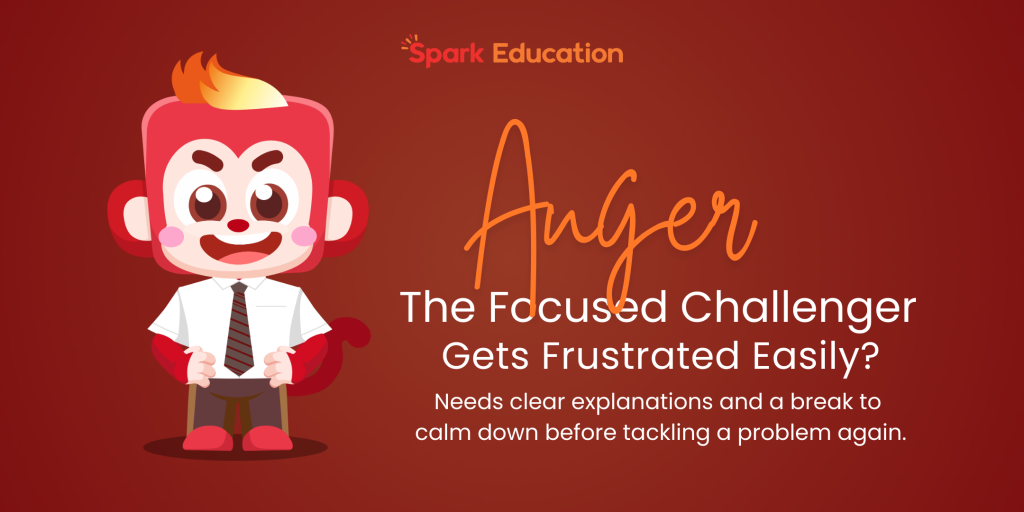
Does your child easily get frustrated with math challenges? They might be an Anger. Then, they will need clear explanations and a structured approach.
At Spark Math, our teachers specialize in breaking down complex problems into smaller, manageable steps, offering clear explanations and visual aids. Your child will also adopt a systematic UDSC approach to solve math problems calmly and independently.
Additionally, our structured pre-, in-, and post-class routines foster good study habits. By providing a consistent framework, we help Anger-type learners channel their energy into focused problem-solving and approach math with a more determined mindset.
Fear: The Confident Adventurer

If your child avoids answering questions in class or shy away from math competitions, they might be a Fear. They often need a gentle push outside their comfort zone.
Spark Math creates a safe and friendly learning space and equip Fear-type learners with the tools they need to succeed. Every module, we start with foundational skills and gradually moving on to harder concepts. With positive reinforcement and achievable goals, we also help your child overcome their fear and build confidence step by step.
Imagine your child confidently raising their hand to answer a question, or even eagerly signing up for a math challenge. With the right support, kids with any math learning styles can also turn their fear into excitement for learning math.
Disgust: The Curious Investigator
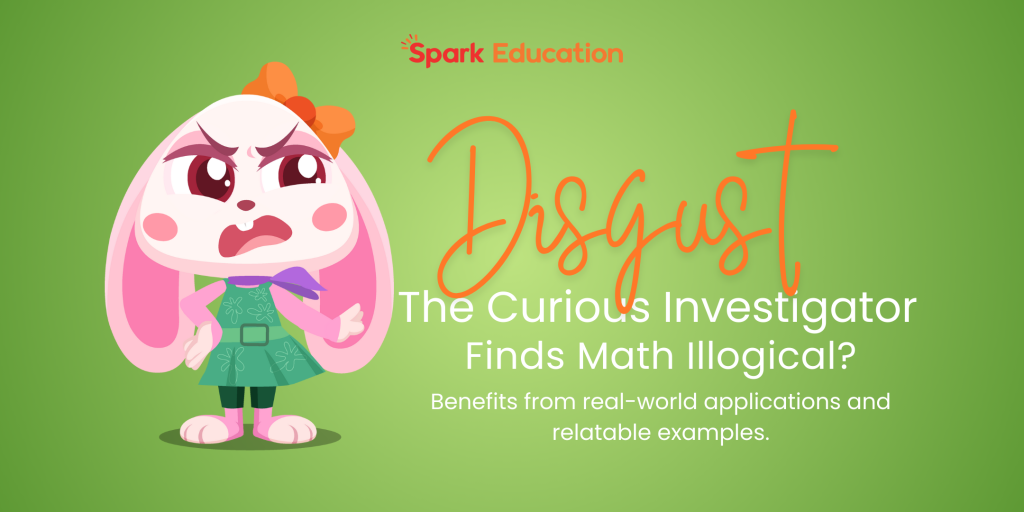
Does your child question everything and want to know why? They might identify with Disgust. These kids need to see the point of math.
At Spark Math, we show kids how math is used in real life. From figuring out how long a car trip will take to baking the perfect cookies, we make math practical and useful. By learning to apply math in daily life, Disgust-type learners start to see the logic and fun in math.
We help kids discover that math isn’t just about numbers but a tool for understanding the world around them.
Anxiety: The Triumphant Achiever
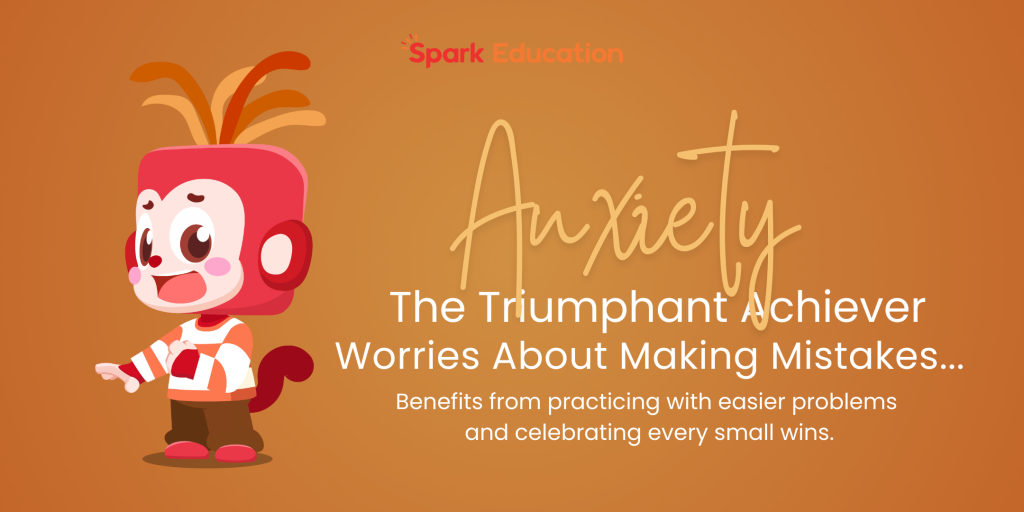
Does your child worry about getting the wrong answer or feel stressed about math tests? They might be an Anxiety. These learners need a clear path forward and lots of encouragement.
At Spark Math, we break down math into small, easy-to-understand steps. We use gamification to set clear goals, celebrate each small win along the way. Our interactive courseware makes learning math feel like a game. With lots of practice and positive feedback, your child will start to feel more confident and less anxious about math.
We help Anxiety-type learners build a “can-do” attitude, showing them that mistakes are okay and that everyone learns at their own pace.
Envy: The Self-Determined Learner
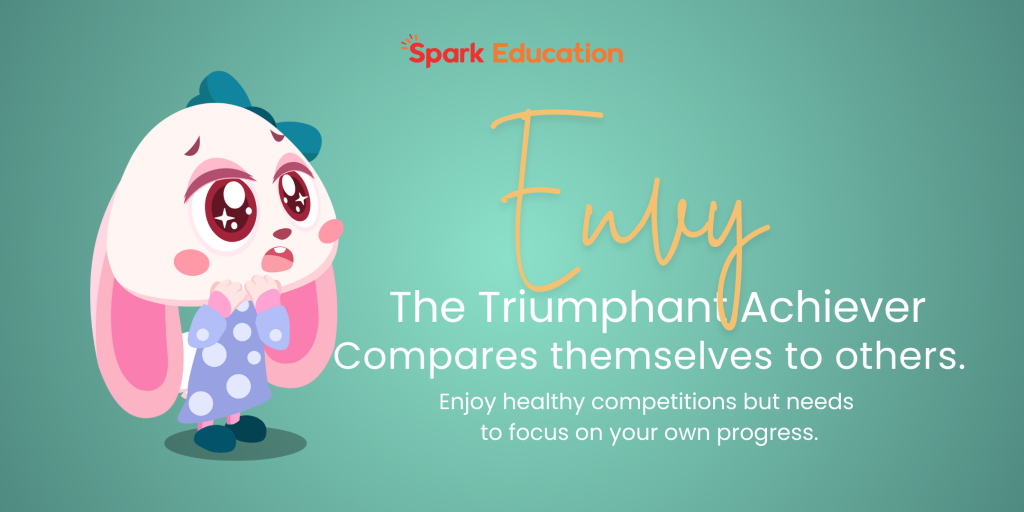
Does your child often compare themselves to others and gets discouraged? They might be an Envy. These kids need to focus on their own progress instead of someone else’s.
At Spark Math, we help kids see that everyone learns at their own pace. Our proprietary dual-interface learning platform offers personalized feedback and tailored practice during classwork. This means each child gets their own unique learning experience. With our digital assessment system, kids can track their own improvement and celebrate their achievements.
We help Envy-type learners understand that their journey is unique. By focusing on personal growth and setting their own goals, they can build confidence and resilience.
Embarrassment: The Collaborative Explorer

Does your child hesitate to share their ideas or make mistakes in front of others? They might be an Embarrassment. These kids thrive in a supportive environment where they can learn at their own pace.
At Spark Math, we believe in the power of collaboration. Our classes offer a mix of independent work and group activities. Students share their problem-solving strategies, learn from each other, and build confidence by working together. Through our Little Teacher Presentation video assignments, kids can also practice explaining their thinking without the pressure of face-to-face interaction.
With a blend of individual and group learning tasks, we help Embarrassment-type learners overcome their fear of making mistakes and build strong communication skills.
Ennui: The Passionate Discoverer

Does your child often zone out during math class or ask, “When will I ever use this?” They might be an Ennui. These kids need to see the excitement and relevance of math.
At Spark Math, we turn math into a real-world adventure. We use math to solve everyday problems, such as figuring out how many Stars they need to earn in class for the items they want to redeem from Star Mall. We also incorporate math into fun activities, like creating patterns with T-gram pieces.
By showing Ennui-type learners how math is used in their lives, we spark their curiosity and making math learning fun. They will discover that math is not just about numbers and patterns.
Creating a Supportive Learning Environment
Every child learns math differently. Just like the characters in Inside Out 2, they bring their own unique set of strengths and challenges to the table. That’s why there’s no one-size-fits-all approach to teaching math.
By understanding your child’s learning style and creating a supportive environment, you can help them reach their full potential. At Spark Math, we believe every child can succeed in math. We offer a variety of teaching methods to cater to different learning styles, making math fun and engaging for everyone.
Ready to see how Spark Math can help your child?
Sign up for our FREE trial class today. Your child can expect professional teaching, animated explanations, and helpful resources to boost their math confidence!




